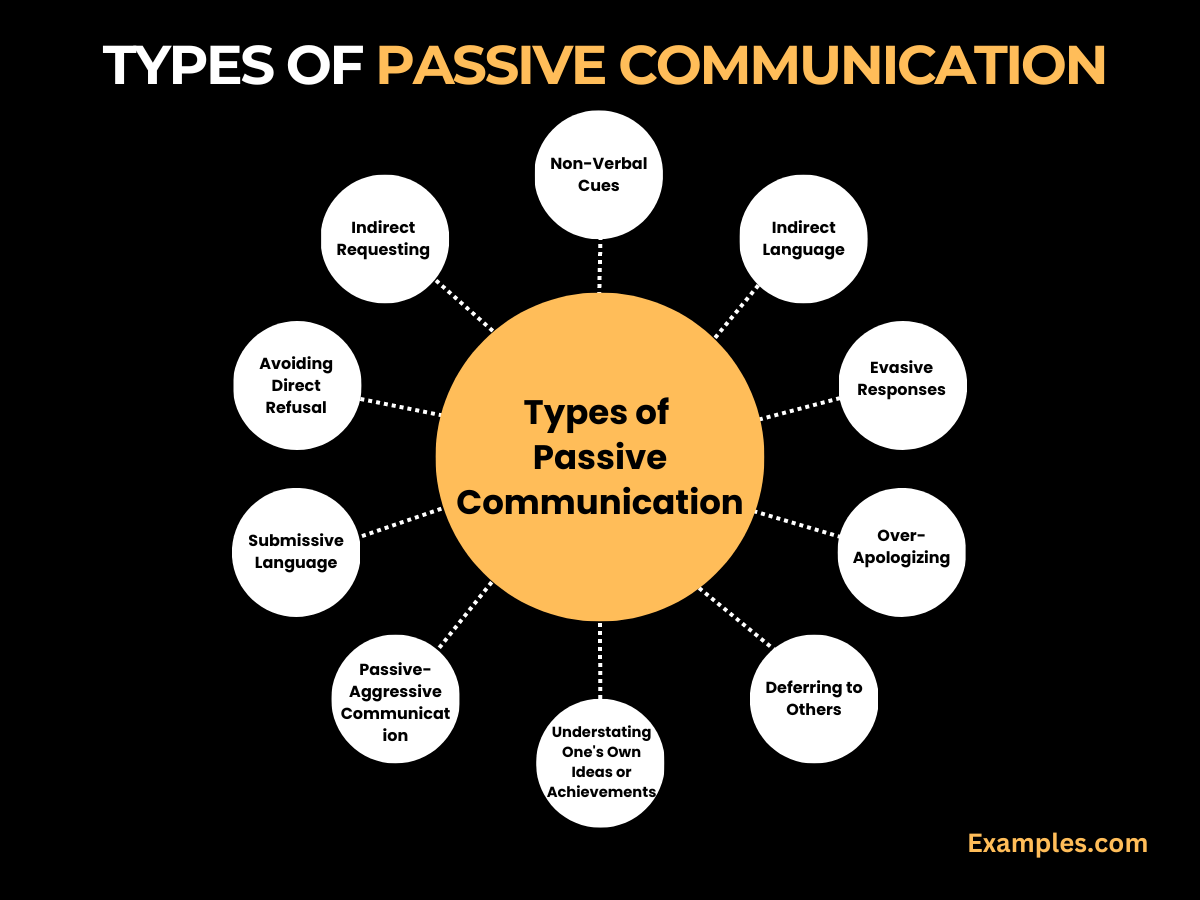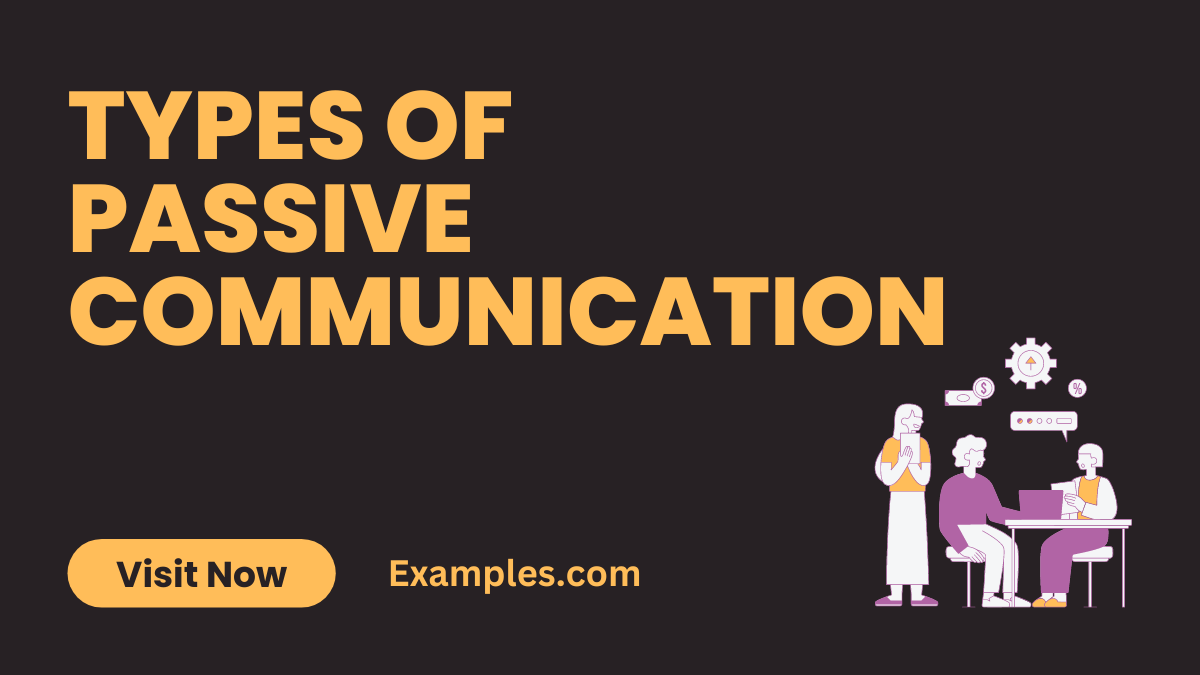Types of Passive Communication – Examples, Types
In this comprehensive guide, we explore the diverse Types of Passive Communication, each serving a unique purpose in conveying messages subtly and non-confrontationally. Emphasizing the Passive aspect in communication, these examples are essential for anyone looking to enhance their Interpersonal Communication skills. From professional settings to personal relationships, understanding and effectively utilizing these passive communication types can greatly aid in reducing Miscommunication and fostering more harmonious interactions. This guide is designed to provide you with practical, real-world examples, enriching your communication toolbox with gentle yet effective techniques.
Types of Passive Communication

Understanding the various Types of Passive Communication is crucial for effective and empathetic interactions. Here, we explore ten distinct types, each playing a unique role in how we convey and interpret messages passively.
Non-Verbal Cues:
Passive Communication often relies heavily on non-verbal signals, such as body language and facial expressions, to convey messages without direct verbal confrontation. In a professional setting, a passive communicator might avoid eye contact or have closed body language to signal discomfort or disagreement without verbalizing it.
Example: A team member sitting with crossed arms and minimal eye contact during a heated meeting, indicating disagreement without speaking up.
Indirect Language:
This type involves using language that hints at a message rather than stating it outright. It’s common in cultures where Direct Communication is less favored. For instance, saying “It’s a bit chilly in here, isn’t it?” instead of directly asking to close a window.
Example: “It’s interesting you chose this approach,” as an indirect way of questioning a decision.
Evasive Responses:
A hallmark of Passive Communication is giving vague or non-committal responses to avoid conflict or making a direct statement. In situations like performance reviews, a passive communicator might use evasive language to avoid direct critique.
Example: “I’ll think about it,” or “Maybe,” as responses to avoid giving a firm answer.
Over-Apologizing:
Passive communicators often apologize excessively, even for situations beyond their control, as a way to avoid potential conflict or to placate others. This can be especially evident in customer service interactions.
Example: “I’m sorry to bother you with this,” even when making a reasonable request.
Deferring to Others:
Routinely allowing others to take the lead or make decisions, even when having strong opinions or ideas, is a passive communication strategy. This is often seen in team dynamics where a member consistently defers to peers or superiors.
Example: “Whatever you think is best,” when asked for an opinion in a group discussion.
Understating One’s Own Ideas or Achievements:
This type involves downplaying one’s own contributions or ideas as a way to avoid drawing attention or potential criticism. It’s common in environments where self-promotion is not encouraged.
Example: “It was just a small thing I did,” minimizing a significant contribution.
Passive-Aggressive Communication:
Sometimes, Passive Communication can border on passive-aggressiveness, where the communicator expresses negative feelings indirectly rather than openly addressing them. This is often counterproductive and can lead to Miscommunication.
Example: “Fine, do it your way,” with an undertone of resentment.
Submissive Language:
Using submissive language involves framing statements in a way that puts the speaker in a lower, less confrontational position. This is often used to avoid asserting authority.
Example: “I just thought I might suggest…” as a way to softly introduce an idea.
Avoiding Direct Refusal:
Instead of directly saying no, a passive communicator will often avoid refusal by giving ambiguous answers. This is a strategy to avoid potential conflict that might arise from rejection.
Example: “I’m not sure I can do that,” instead of a straightforward no.
Indirect Requesting:
Making requests in an indirect manner is a common passive communication strategy, used to avoid appearing demanding. It’s often seen in polite or formal contexts.
Example: “Would it be possible for you to help me with this?” as an indirect way of asking for assistance.
In summary, this article has illuminated the diverse landscape of Passive Communication, providing a toolkit for those seeking more nuanced, non-confrontational ways of expressing themselves. These strategies, essential in both personal and professional spheres, encourage more thoughtful, empathetic interactions. By integrating these forms of communication into your repertoire, you can navigate complex social dynamics more effectively, paving the way for more harmonious and understanding relationships.



